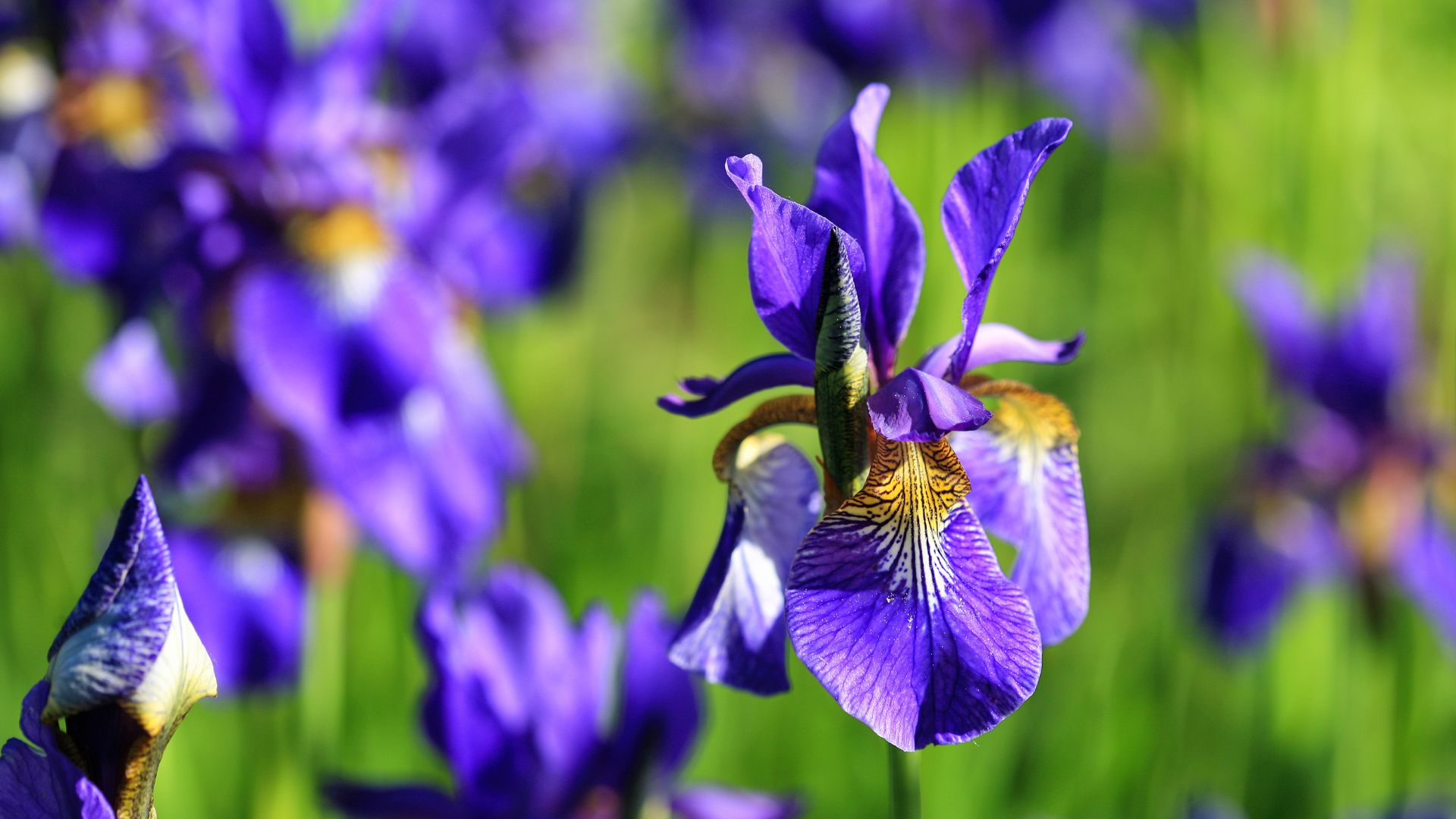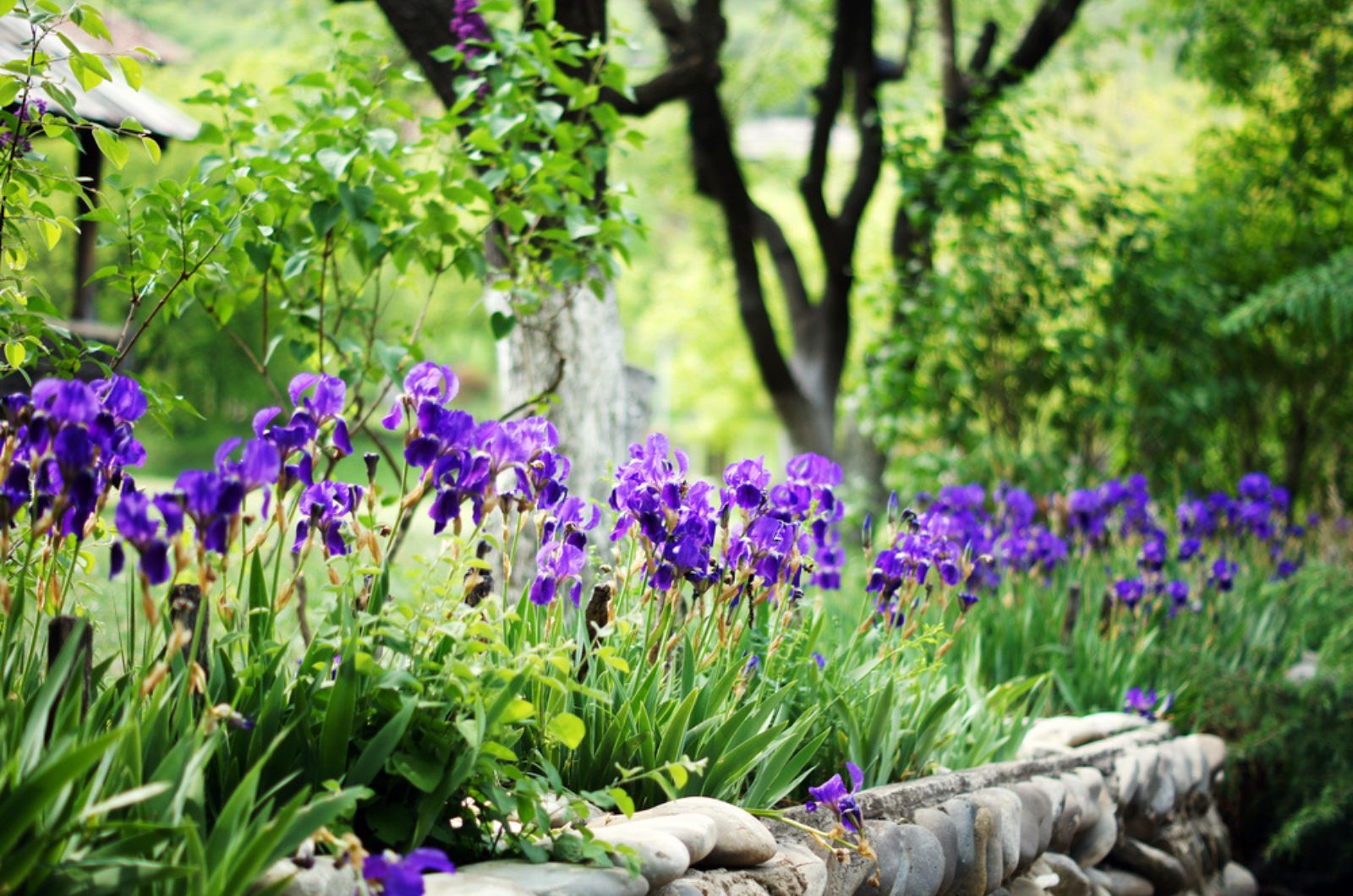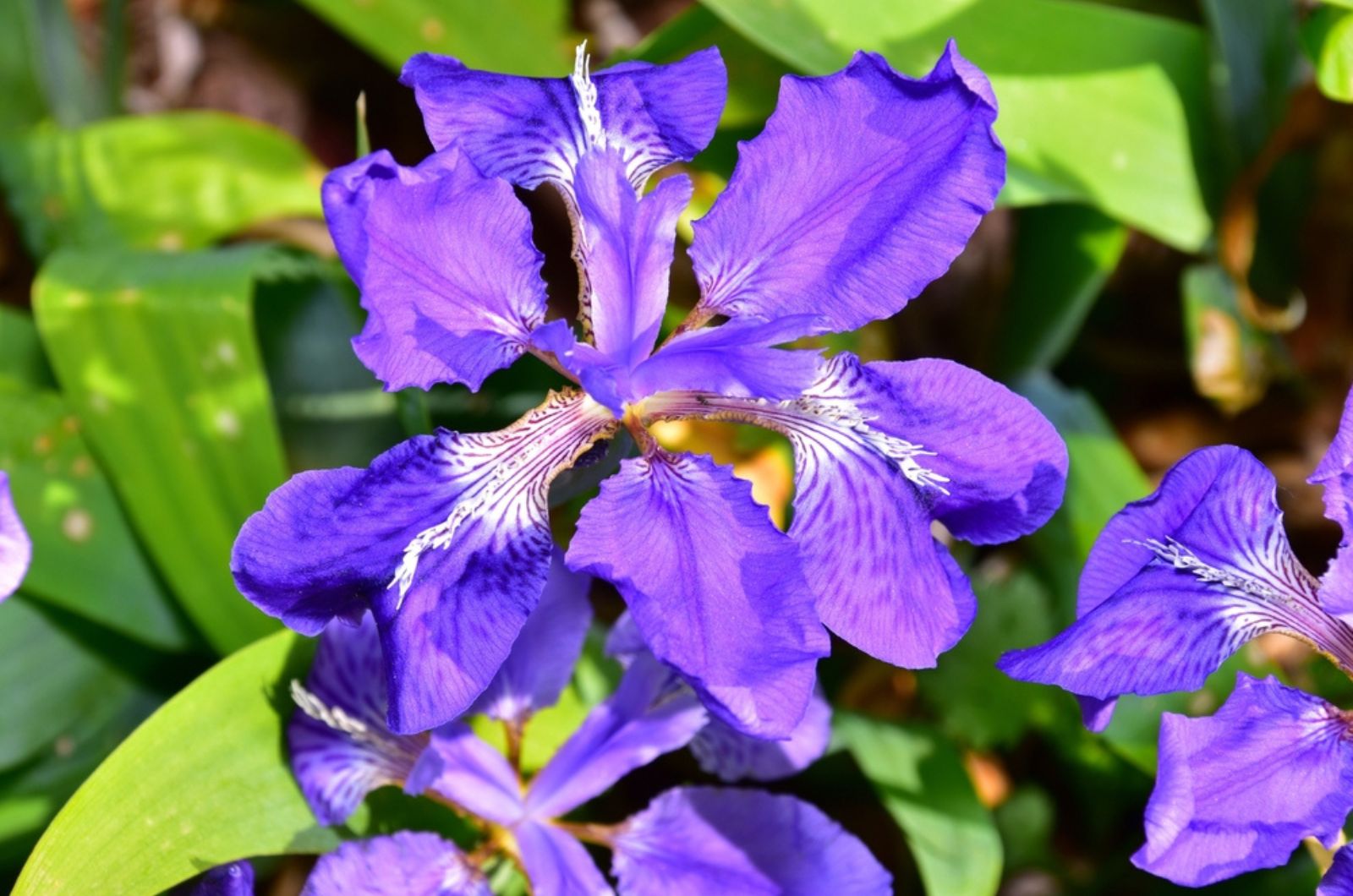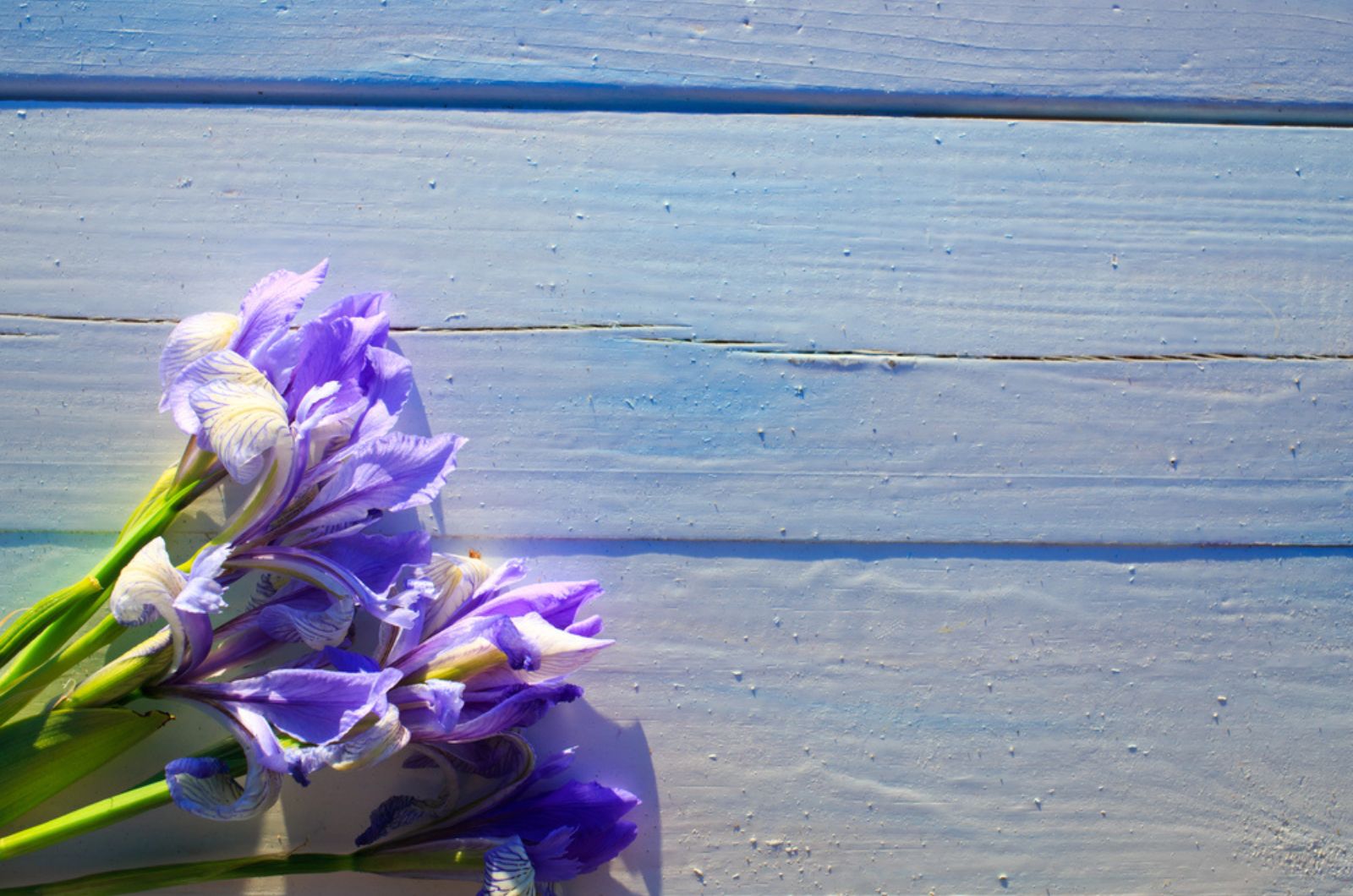Adding flowering perennials to your outdoor garden is an excellent way to get blossoms year after year with little effort.
If you are looking for a new variety, I have a perfect plant for you. Meet the Siberian Iris Flower, a captivating species from the Iris family.
This plant is perfect for novice gardeners because it doesn’t need much to thrive and it isn’t prone to pests and diseases.
However, there are some things to consider, so I’ll show you in detail how to grow Siberian Iris flowers.
Let’s get started!
More About Siberian Iris Flowers
This species is native to European and Asian regions and, as the name suggests, to Siberia. It was introduced in the 16th century and soon became famous because of its splendid blooms.
Over the years, breeders have used the opportunity to create hybrids and, thanks to them, we have many varieties to choose from.
This herbaceous perennial won’t exceed 4 feet and you can cultivate it if you live in USDA hardiness zones 3 through 9.
Bees and butterflies love these old-fashioned plants, so Siberian Iris will not only elevate your garden decor but also attract pollinators.
You can combine it with various flowers, such as peonies, but for best results, plant your irises next to forsythia to reap the benefits of both plants.
The only drawback of the Iris sibirica is its toxicity, so be careful where you plant it. (1)
Varieties To Select
Even though purple Siberian irises are the most popular, these plants come in various other colors.
Here are my top picks!
• So Van Gogh: If you want to add a unique touch to your garden, a So Van Gogh Siberian Iris is the perfect choice.
It generates captivating downward petals that come in yellow but have purple veins. The upward petals come in a periwinkle hue, adding a special touch of beauty.
• Painted Woman: If you’re more into reddish hues, the Painted Woman is the best choice. Its downward petals come in stunning blushing red and are adorned with golden sprinkles.
The ruffled upward petals are colored in a creamy hue and will make an excellent addition to your spring garden.
• Concord Crush: The rich blossoms of Concord Crush will fit into every garden design. Each blossom features multiple violet petals and the centers come in white.
• White Swirl: Elegant ivory-white blossoms of the White Swirls make this variety stand out. Lemon-yellow centers will brighten up your outdoor space!
How To Plant
This herbaceous perennial has a long lifespan, so it’s essential to choose the right spot and employ the correct planting technique.
Let’s start with the planting hole. It must be approximately three times as wide and twice as deep as the Siberian Iris plant.
When planting, I highly recommend adding some organic matter into the hole; compost is a perfect choice for Siberian Irises.
Make sure you do not put the crown below the soil line and simply add more soil if your planting hole is too deep.
Irrigate your newly planted Siberian Iris and keep the soil consistently moist during the first year of growth.
How To Grow Siberian Iris Flowers
Remember when I said that the Siberian Iris doesn’t need much to thrive? Let’s see its basic requirements.
Light Requirements
These Iris species tolerate both full sun and partial shade. However, you should use your climate as the main guide for determining the light level.
For instance, if you live in cooler climates, you should opt for a sunny spot for your Siberian Iris.
On the other hand, if you live in warmer climates, I suggest choosing a spot that receives some shade during the hottest parts of the day.
Ideal Soil Type
These colorful flowers flourish in rich and quick-draining soil types. If you grow any other perennials, I’m sure you already know that they have similar soil requirements.
However, the Siberian Iris can grow well even if the soil conditions aren’t favorable. The essential thing is not to plant them in a growing substrate which is prone to waterlogging.
Watering Schedule
The Siberian Iris flourishes in consistently moist soil conditions. You need to be careful not to leave its roots to sit in standing water because they could quickly rot.
Amending the soil with organic matter is an excellent way to enhance moisture retention and prevent the soil from becoming soggy.
Temperature
As mentioned, Iris sibirica species grow best in USDA zones 3 through 9. This makes them suitable for growing in various regions.
They’re cold-hardy and you most likely won’t need to ensure any winter protection even if you live in cooler climates.
Pay extra attention if you live in warmer climates and ensure some shade and irrigate more frequently.
Fertilizing
The Siberian Iris is a pretty unusual plant when it comes to its fertilizing requirements. Store-bought fertilizers encourage leafy growth and reduce the number of blossoms.
So, for best results, you should opt for organic matter; compost, well-aged manure, and sea soil are some of the fertilizers you can use for these Irises.
If you are unable to apply such fertilizers for some reason, add an all-purpose slow-release fertilizer when the spring arrives.
Maintenance
Once you ensure all the necessary conditions, things with Siberian Irises get easy. You can trim off blooms after the flowering stage is over.
This step is optional and its main purpose is to remove seed pods. If you like the appearance of seed pods, don’t clean them until spring arrives.
How To Propagate
You can get new Siberian Irises by purchasing transplants or rhizomes from a nursery.
Seed propagation is possible but I don’t recommend it because the process is long and you most likely won’t get the same plant.
I prefer the division propagation method for Siberian Irises, and here’s how to do it.
Division
Divide your Siberian Irises in the fall when they exit the blooming stage.
1. Take your Siberian Iris out of the ground.
2. Split the rhizomes using sharp and clean tools.
3. Leave two-thirds of the entire plant undivided.
4. Replant each section in a new container filled with suitable Siberian Iris potting soil and water everything well.
Pests And Diseases
I’ve already mentioned that Siberian Irises aren’t prone to problems but some may occur.
Pests
The Siberian Iris and Irises in general may be attacked by the Iris borer, a destructive pest that can suck the life out of the plants.
Yellowing and wilting foliage and signs of tunneling near the Siberian Iris plant’s base are the telltale signs of Iris borer infestation.
Always remove any infested rhizomes and apply insecticide to prevent the pest from attacking the plants in the next season.
Soft-bodied aphids can also occur in your Siberian irises and the most common signs are deformed and discolored foliage.
You can use various pest control methods to get rid of aphids, such as showering your irises or applying insecticidal soap.
Diseases
Bacterial soft rot, commonly known as Iris rot, can attack these species. If your Siberian iris is infected, its leaves and rhizomes will start to decay.
Good airflow, enough light, and fast-draining soil are the preventive measures you should take to avoid this disease.
You should also ensure spacing of about 18-24 inches between each Siberian Iris plant to promote airflow.
If the plant is already infected, cut off the diseased foliage and apply fungicide.
Your Siberian Iris can develop dark spots with yellow halos if it suffers from Iris leaf spot. Good airflow typically prevents this disease but, if it occurs, you can remove the infected foliage and apply fungicide.
Siberian Irises will brighten up your garden space and all you need to do is to follow our guide to keep them happy and healthy!
References
1. Iris sibirica (Siberian Flag, Siberian Iris) | North Carolina Extension Gardener Plant Toolbox. (n.d.).






